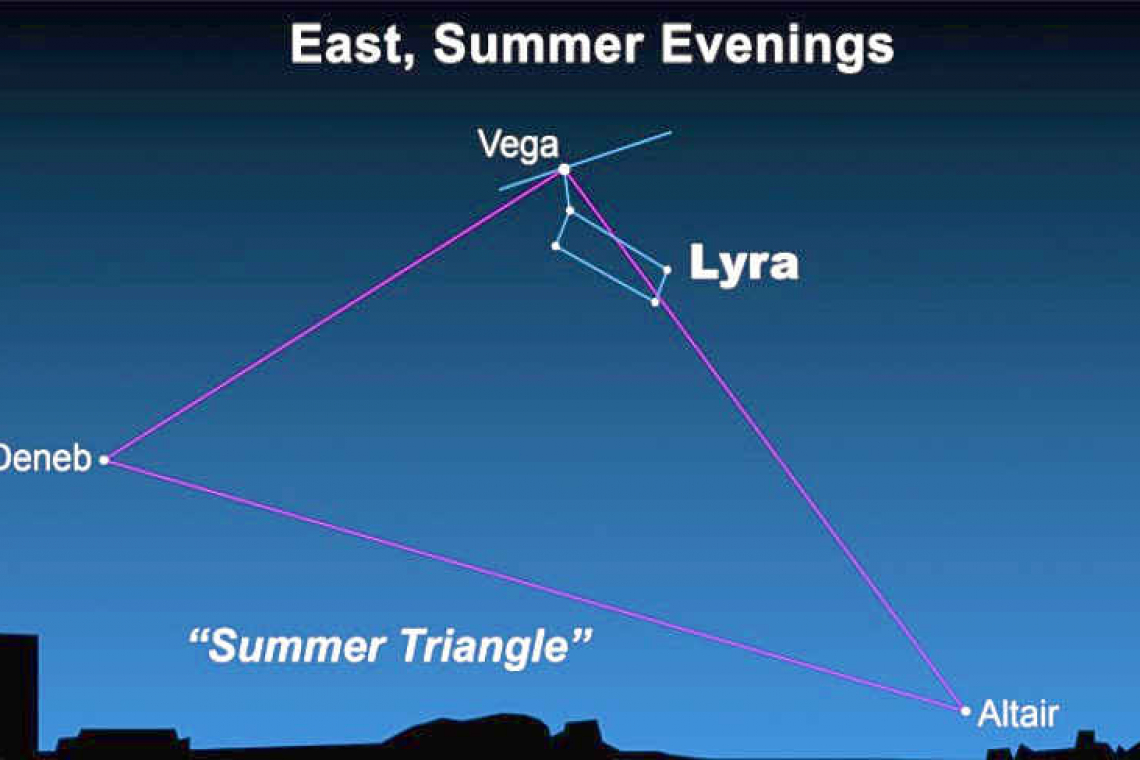~ St. Maarten’s Backyard Astronomy for July 15-17 ~
Sun rises at 5:45am
Sun sets at 6:51pm
Lunar phase: 3rd quarter, waning gibbous
Moon set: 8:39am
Moon rise: 9:44pm
This weekend, we look up, directly up, during the early evening hours, to find a small constellation with a big presence. We will be searching for Lyra the Harp. Why is this constellation worthy of our attention? Well, for one thing, it is home to Vega, a brilliantly bright star which is prominent in our summer skies. For another, Lyra is one of the constellations that Ptolemy sky-mapped and named back in the 2nd century.
A couple of notes on Lyra’s main star, Vega: this is the fifth brightest star in the entire sky and is also the second brightest star in the Northern Hemisphere (second to Arcturus). Vega’s brightness is in part due to its closeness; it is situated only 25 light-years away from Earth. Lyra is known for holding down one corner of the famous star shape known as the Summer Triangle.
To find Lyra, look directly overhead in the evening. The brightest star closest to your zenith point is Vega. It will get closer to the zenith and pass through it as the evening turns to morning.
Other than Vega, the other five stars that make up Lyra the Harp are also interesting. The two stars rectangle-shaped closest to Vega are both double stars. A good pair of binoculars may be able to split images from single points of light into the two separate stars; a telescope works better. The star situated at the top of the harp is Epsilon Lyrae, a rare Double-Double star set! A telescope reveals that this double star is actually a quadruple. Then lower down on the harp, we can find two Messier objects. The first is known as the Ring Nebula. A nebula is a cloud of dust and gas, which sounds a bit boring, but they are often colourful, delicate, and even awe-inspiring. This Ring Nebula is one of the most observed objects of its type in the sky. It shines at magnitude 9.0 from about 2,300 light-years away. You can find it easily by looking between the bottom-two stars of the harp Sheliak and Sulafat. Use a telescope to catch its oval glow.
Enjoy looking at Lyra the Harp and its interesting array of double stars, quadruple stars and deep sky objects. Find a reclining position or a lounge chair to take it easy on your neck, looking directly up can be difficult.
Thank you for keeping up with the Night Sky articles, backyard astronomy designed for St. Maarten sky viewing. FYI: If you are out later on in the week, note that each star rises about four minutes earlier each day than written here, and the moon rises 50 minutes later. Night Sky is researched and compiled by Lisa Davis-Burnett. Earthsky.org is a key resource for information and images. Questions or comments? Email This email address is being protected from spambots. You need JavaScript enabled to view it.







